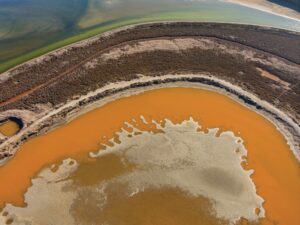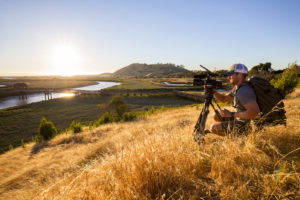When Florence LaRiviere heard last year that 16,000 acres of Cargill’s salt ponds had been acquired for restoration, the longtime Bay advocate rejoiced. “This work will start changing the land and the waters back to what they looked like a long time ago. It’s very, very heartwarming to me,” the 80-year-old great grandmother says. Her voice is soft, but the steely determination and shrewd analysis that have sustained her through more than four decades of grassroots activism come through in her words.
“This is the first time we’ve had real evidence that we’re going to have some changes here,” she says, venting frustration over Cargill’s continued right to make salt on many lands that are now part of the refuge.
LaRiviere and her husband, Philip, were among those who helped lead the public charge to acquire these ponds and transform them from salt production to their natural state. In the late 1960s, they went door-to-door handing out brochures about the Bay, took classes on tideland ecosystems, and used their new knowledge for lobbying and public education.
As cofounders of the Citizens’ Committee to Complete the Refuge, they embraced an impossibly ambitious dream: returning every open acre of San Francisco Bay shoreline and salt pond back to wildlife habitat. “It has always been a small group,” she says of the committee. “But you only need a small group if they know the land and really care about it.”
The campaigns of this small group have been phenomenally successful. The LaRivieres have been instrumental in establishing the Don Edwards San Francisco Bay National Wildlife Refuge, protecting Bair Island from developers, and stopping a development planned for Mayhews Landing in Newark. Later, a neighboring 102-acre tract of restored marsh was named in their honor.
Though delighted by the plans for this larger restoration, Florence LaRiviere has no intention of hanging up her activist’s spurs. For example, she still wants several thousand acres of salt ponds in Redwood City and Newark not included in the agreement added to the refuge.
LaRiviere attributes her perseverance to the vision of what a healthy Bay could be. “The mayor of Fremont, Gus Morrison, once said we were undaunted by success,” LaRiviere says. “It’s true. We’re never satisfied.”

.jpg)



